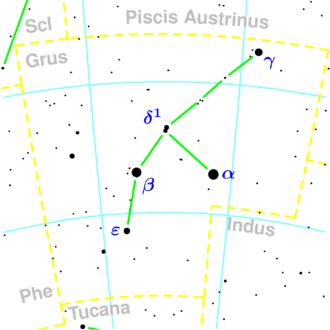NGC 7145
| Galaxy NGC 7145 |
|
|---|---|
|
|
|
| AladinLite | |
| Constellation | crane |
|
Position equinox : J2000.0 , epoch : J2000.0 |
|
| Right ascension | 21 h 53 m 20.2 s |
| declination | -47 ° 52 ′ 57 ″ |
| Appearance | |
| Morphological type | E0 |
| Brightness (visual) | 11.1 mag |
| Brightness (B-band) | 12.1 mag |
| Angular expansion | 2.5 ′ × 2.4 ′ |
| Position angle | 173 ° |
| Surface brightness | 13.1 mag / arcmin² |
| Physical data | |
| Affiliation | LGG 448 |
| Redshift | 0.006561 +/- 0.000033 |
| Radial velocity | 1967 +/- 10 km / s |
|
Stroke distance v rad / H 0 |
(87 ± 6) · 10 6 ly (26.6 ± 1.9) Mpc |
| history | |
| discovery | John Herschel |
| Discovery date | October 2, 1834 |
| Catalog names | |
| NGC 7145 • PGC 67583 • ESO 237-13 • 2MASX J21532023-4752569 • SGC 215007-4807.1 • GC 4712 • h 3895 • LEDA 67583 • LDCE 1489 NED002 | |
NGC 7145 is an elliptical galaxy of the Hubble type E0 in the constellation Crane in the southern sky . It has an angular dimension of 2.5 '× 2.4' and an apparent magnitude of 11.1 mag. The galaxy is estimated to be 87 million light years away from the Milky Way and has a diameter of around 65,000 ly.
In the same area of the sky is the galaxy NGC 7144 .
The object was discovered by John Herschel on October 2, 1834 .
